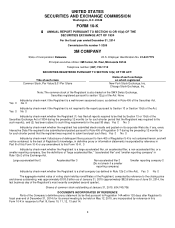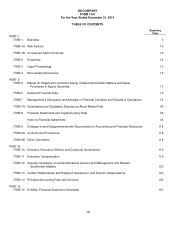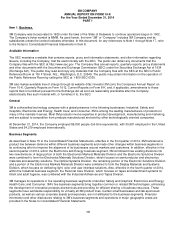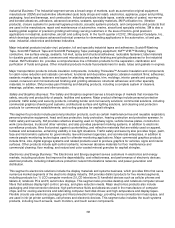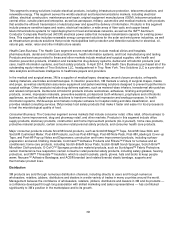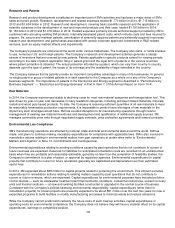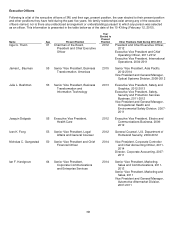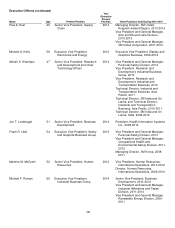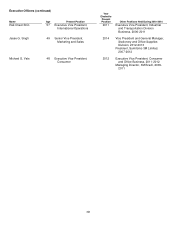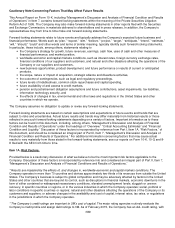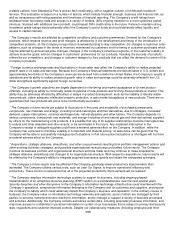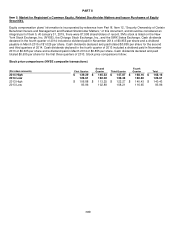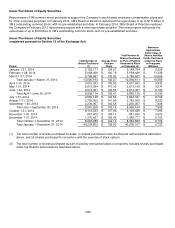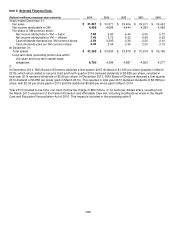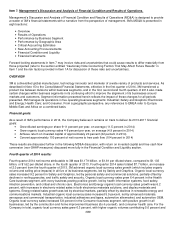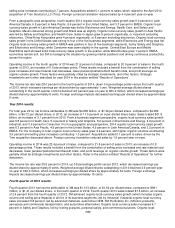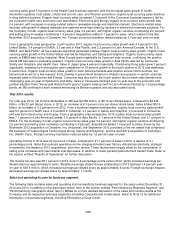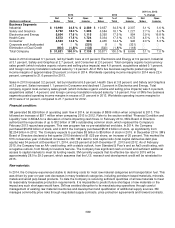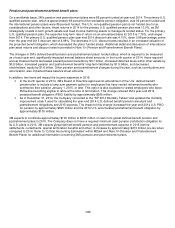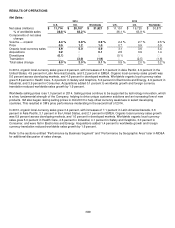3M 2014 Annual Report Download - page 17
Download and view the complete annual report
Please find page 17 of the 2014 3M annual report below. You can navigate through the pages in the report by either clicking on the pages listed below, or by using the keyword search tool below to find specific information within the annual report.11
a stable outlook, from Standard & Poor's and an Aa3 credit rating, with a negative outlook, from Moody's Investors
Service. This evaluation is based on a number of factors, which include financial strength, business and financial risk, as
well as transparency with rating agencies and timeliness of financial reporting. The Company’s credit ratings have
facilitated lower borrowing costs and access to a variety of lenders. 3M’s ongoing transition to a more optimized capital
structure, financed with additional low-cost debt, could impact 3M’s credit rating in the future. Failure to maintain strong
investment grade ratings would adversely affect the Company’s cost of funds and could adversely affect liquidity and
access to capital markets.
* The Company’s results are affected by competitive conditions and customer preferences. Demand for the Company’s
products, which impacts revenue and profit margins, is affected by (i) the development and timing of the introduction of
competitive products; (ii) the Company’s response to downward pricing to stay competitive; (iii) changes in customer order
patterns, such as changes in the levels of inventory maintained by customers and the timing of customer purchases which
may be affected by announced price changes, changes in the Company’s incentive programs, or the customer’s ability to
achieve incentive goals; and (iv) changes in customers’ preferences for our products, including the success of products
offered by our competitors, and changes in customer designs for their products that can affect the demand for some of the
Company’s products.
* Foreign currency exchange rates and fluctuations in those rates may affect the Company’s ability to realize projected
growth rates in its sales and earnings. Because the Company’s financial statements are denominated in U.S. dollars and
approximately two-thirds of the Company’s revenues are derived from outside the United States, the Company’s results of
operations and its ability to realize projected growth rates in sales and earnings could be adversely affected if the U.S.
dollar strengthens significantly against foreign currencies.
* The Company’s growth objectives are largely dependent on the timing and market acceptance of its new product
offerings, including its ability to continually renew its pipeline of new products and to bring those products to market. This
ability may be adversely affected by difficulties or delays in product development, such as the inability to identify viable
new products, obtain adequate intellectual property protection, or gain market acceptance of new products. There are no
guarantees that new products will prove to be commercially successful.
* The Company’s future results are subject to fluctuations in the costs and availability of purchased components,
compounds, raw materials and energy, including oil and natural gas and their derivatives, due to shortages, increased
demand, supply interruptions, currency exchange risks, natural disasters and other factors. The Company depends on
various components, compounds, raw materials, and energy (including oil and natural gas and their derivatives) supplied
by others for the manufacturing of its products. It is possible that any of its supplier relationships could be interrupted due
to natural and other disasters and other events, or be terminated in the future. Any sustained interruption in the
Company’s receipt of adequate supplies could have a material adverse effect on the Company. In addition, while the
Company has a process to minimize volatility in component and material pricing, no assurance can be given that the
Company will be able to successfully manage price fluctuations or that future price fluctuations or shortages will not have
a material adverse effect on the Company.
* Acquisitions, strategic alliances, divestitures, and other unusual events resulting from portfolio management actions and
other evolving business strategies, and possible organizational restructuring could affect future results. The Company
monitors its business portfolio and organizational structure and has made and may continue to make acquisitions,
strategic alliances, divestitures and changes to its organizational structure. With respect to acquisitions, future results will
be affected by the Company’s ability to integrate acquired businesses quickly and obtain the anticipated synergies.
* The Company’s future results may be affected if the Company generates fewer productivity improvements than
estimated. The Company utilizes various tools, such as Lean Six Sigma, to improve operational efficiency and
productivity. There can be no assurance that all of the projected productivity improvements will be realized.
* The Company employs information technology systems to support its business, including ongoing phased
implementation of an enterprise resource planning (ERP) system on a worldwide basis over the next several years.
Security breaches and other disruptions to the Company’s information technology infrastructure could interfere with the
Company’s operations, compromise information belonging to the Company and its customers and suppliers, and expose
the Company to liability which could adversely impact the Company’s business and reputation. In the ordinary course of
business, the Company relies on information technology networks and systems, some of which are managed by third
parties, to process, transmit and store electronic information, and to manage or support a variety of business processes
and activities. Additionally, the Company collects and stores certain data, including proprietary business information, and
may have access to confidential or personal information in certain of our businesses that is subject to privacy and security
laws, regulations and customer-imposed controls. Despite our cybersecurity measures (including employee and third-


